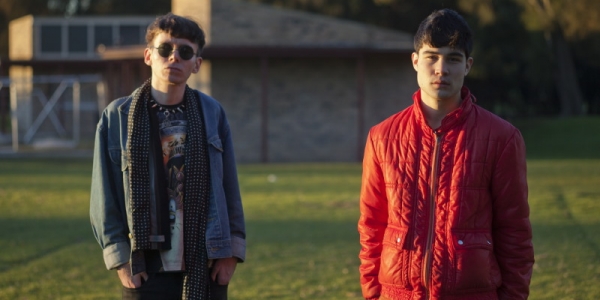“We’ve being playing live a lot, which has perhaps made us more aware at what things are more affecting and what things go over people’s heads,” he says on the honing of their sound. “The most obvious thing there is that this album has a lot more straight-up songs, also because I became a lot more interested in R&B and that sort of thing. Also particular sounds and beats that are more immersive. I’ve kind of come around to realising that a lot of the stuff I was writing with lyrics was just incomprehensible, so this time I was coming up with a more unified theme and stimulus. I guess I was writing pretty earnestly.”
Each aspect of Collarbones’ multi-faceted output is imbued with a rich sense of nostalgia – from their ’90s pastiche cover art of last year’s Tiger Beats mixtape to the earnest longing of Die Young single Missing. “If we can characterise these times that we’re in with anything, it’s probably nostalgia. More so than ever before. I have theories, mostly to do with how we’re constantly bombarded with media and live our lives through tapestries of media mummification,” Marcus ponders. “Before you may have had a conversation with someone with only your self as stimulus, but these days media is a really big part of how we interact with each other. Which I think is one of the big reasons why we’ve gone into this really nostalgic phase aesthetically. This is particularly true of Travis and I because we mostly interact on the internet. Along with text is the constant stream of links to pictures and music and videos, which can only come from another place in time – whether it be last week in my room or 30 years ago in another country.”
With Bieber covers standing as a staple of the Collarbones’ live performance, the duo most definitely wear their penchant for mainstream pop on their sleeves. But with 2012 lacking in that regard so far, Marcus has had to look elsewhere for inspiration. “I’m pretty divided right now, because I look at all the pop music that I’m really into [and] it’s kind of not that popular. I guess the really slow R&B has gone out of favour, now there’s a lot of EDM, trance influence which I think Travis really likes,” he explains. “I have trouble resolving that. I think the best example is Usher’s big two singles this year. On the one hand there’s Climax, which is this totally majestic slow, or slow-ish, R&B track and just completely heartbreaking and perfectly put together. Then there’s Scream, which Travis would probably like more. But Climax is probably my favourite pop song of this year.”
Collaborating via the internet is par for the course these days, and with Marcus and Travis residing in Sydney and Adelaide respectively it presents the most suitable modus operandi for the production of Collarbones’ material. “We worked on stuff early on, probably over a year ago. Then we didn’t make that much music together in the past year. We thought it was going to be that way because we were going to be on tour together, because on tour you don’t want to sit around in a room trying to make music. So we ended up making most of the music apart from each other. And I really appreciate that you recognise that it’s not out of the ordinary to do that any more. Because every single interview, until this one, I shit you not, it’s been, ‘You guys met on the internet, how funny, how does that work?’. A lot of people do it these days.”
The release of Die Young will be accompanied by a short film made by Paris-based visual artist Michael Salerno, providing a visual interpretation of the album’s wistful thematic links. “I suppose it’s because everyone’s recognised that people react to music really visually these days. Mostly, if you want to hear a track that you don’t have on your computer, you go to YouTube. Often there will be a video clip, and if there isn’t a video clip there will be an image,” Marcus muses. “Then there’s also the extent of which persona and character comes into it, at least with pop music. Twitter has a lot to do with it, you now get this really rich residue of narrative with pop music. The video accompaniment with an album is a really effective way to enrich the experience of the album. In the past year, especially in the past few months, it’s become pretty standard.”
Despite presenting a conventionally tasteful aesthetic on all canonical releases, Marcus and Travis indulge in visuals akin to mixtape covers within their online presence. But don’t expect Marcus to evolve into a Riff Raff-type character any time soon. “I don’t know whether turning into Riff Raff is such a bad thing,” Marcus laughs. “But I think you and I both know that I’m not capable of doing that. I guess with all of that, there’s a couple of sides to us. On one hand there’s this quite serious, dramatic stuff, but that isn’t everything. Especially when it comes to the live show – it’s not that dramatic or serious or introspective. There’s a different vibe going on. Maybe it’s to weather the earnest, serious, stuff. We’re aware it’s pretty easy to make fun of. And I think philosophically we’re opposed to things being sacred. “
BY LACHLAN KANONIUK

